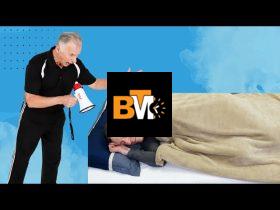Falls are a leading cause of injury among older adults. Every year in Canada, thousands of individuals are treated for fall-related injuries. These incidents can be severely injurious or even result in death, especially in the case of people who live alone or have health conditions that affect their ability to move around.
However, how do you make sure help is available when the fall happens?
Fall detection devices have become an important solution, offering immediate assistance through alerts to emergency contacts in case of a fall. These devices can bring peace of mind, especially for high-risk people.
Here, you will learn how to get the most out of these devices so that they can provide the safety and protection you need when you need it most.
1. Wear the Device Consistently
The most critical thing you can do to maximize your fall detection is to wear the device consistently. If you forget to wear the device, it cannot detect falls when needed. These devices can be worn on the wrist, as a pendant, or put on whenever walking or changing location.
A perfect example is the trusted fall detection devices by Life Assure, which tend to work well when the devices are always on as they alert instantly upon a fall.
Furthermore, to form a habit of wearing the device, leave it somewhere visible, such as on the bedside table, so that it is easy to grab in the morning. Also, wear it somewhere comfortable and secure during the day. Being part of your routine makes forgetting it that much less likely.
2. Know Your Device Features
Each fall detection device has different features. Understanding each feature and how it works will maximize the device’s utilization. For example, some devices can detect falls automatically, while others may require manual activation. Other models may have additional features such as GPS tracking or two-way communication with the emergency service provided.
3. Regularly Test the Device
It is very important to regularly test your fall detection device to ensure it works properly. Like all pieces of technology, devices can experience glitches or malfunction. You should test the device monthly to verify that it detects falls and alerts the proper contacts.
Moreover, testing is particularly important if the device is battery-powered. Batteries slowly drain over time, and unless the device is regularly serviced, it may not be ready when a fall occurs. If your device has a low-battery warning, recharge or replace the battery as needed. Regular testing avoids nasty surprises when a fall finally occurs.
4. Service the Device
Long-term performance requires maintenance of your fall detection device. Cleaning regularly, checking for wear and tear, and replacing worn-out parts can help prevent issues. For example, if straps get loose or uncomfortable on a wristband, they may not stay in place during movement, which reduces the device’s effectiveness.
Servicing will also help maintain the device, considering that dust and moisture are usually the agents causing damage to a device. For waterproof devices, follow cleaning instructions from the device manufacturer. Many fall detection devices use software updates, which often improve how a device functions, so keep updating for the latest changes.
5. Update Emergency Contact Information
Some devices will work in case of falls by sending notifications to emergency contacts. It’s important to make sure your list of emergency contact numbers is always up-to-date.
So, ensure the device has been programmed with whom to contact in case of an emergency, like family members, neighbors, a medical response team.
Additionally, if the device allows, consider adding multiple emergency contacts to reach help even if the first contact doesn’t respond. Periodically updating your contact list will ensure the device is ready to deliver the correct information when you need it most.
6. Integrate with Other Safety Measures
As great as the benefits of fall detection devices are, they certainly shouldn’t be your only safety device. Integrating your device with other safety precautions around the home is important. Simple changes, such as adding grab bars in the bathroom or removing tripping hazards, can prevent falls from happening in the first place.
Additionally, if you have any medical condition or need special assistance, having a more in-depth safety plan is important. This would include a trusted caregiver or friend checking in on you regularly. Along with the other deterrent measures, a fall detection device could become even more useful.
7. Educate Family and Caregivers
Educate your family and caregivers about how the fall detection device works. If you live with a partner or caregiver, ensure that the partner is educated about using the device in case of emergencies, how to receive alerts, and what further actions should be taken. Educating your caregivers also includes equipping them for situations when you may not be in a position to communicate during emergency situations.
Conclusion
Fall detection devices can remarkably improve your life when used properly. Worn all the time, with features well understood and in good repair, it should work when needed.
Regular testing, updated lists of emergency contact numbers, and integration with other safety measures make it even better. Also, educate family and caregivers about how your device works so they can further protect you in case of a fall. When used appropriately, fall detection devices offer good peace of mind and prevent serious injuries in an emergency.






Leave a Reply